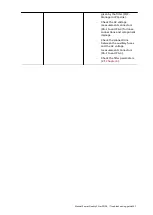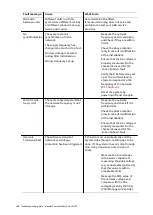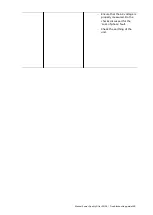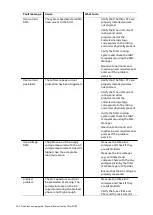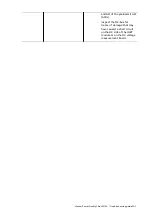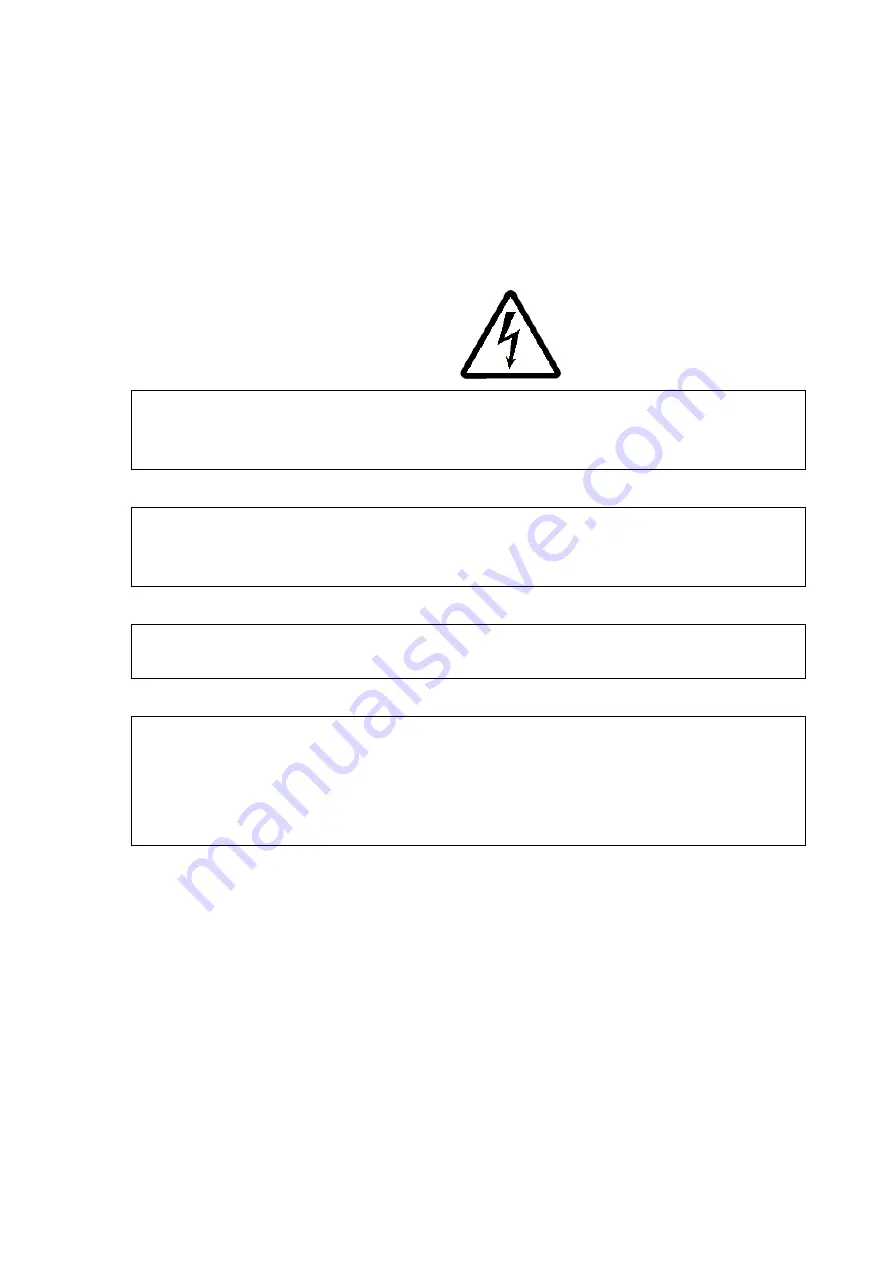
186 Troubleshooting guide
Manual Power Quality Filter PQFS
—
11
Troubleshooting guide
11.1
What this chapter contains
This chapter presents the troubleshooting guide for the active filter. The filter fault
treatment procedure is described. Also, an overview of possible errors is given. Finally,
recommendations are made on how problems may be resolved.
WARNING: All troubleshooting and repair work described in this chapter should only
be undertaken by a qualified electrician. The safety instructions presented in
Chapter 2
of this manual must be strictly adhered to.
WARNING: High AC and DC voltages may be present in the filter panel. Do not touch
any filter parts unless you have ascertained that they do not carry dangerous
voltage levels.
WARNING: Under no circumstances close the main contactor manually. Failure to
adhere to this guideline may result in physical injury and/or in filter damage.
WARNING: Some checks may have to be made with the supply on and the filter
protective cover removed. These tests must be carried out only by authorized and
qualified personnel, in accordance with the local regulations. Apply the safety
guidelines that are presented in
Chapter 2
. Failure to adhere with the safety
guidelines may result in lethal physical injury.
11.2
Fault treatment procedure
All faults that occur are stored in the filter event log and are analyzed by the filter
controller. The event log is of the circular type and can store up to 200 events. It can
be accessed through [/Welcome/PQF Monitoring/Event logging]. Background
information on the event logging display is given in
Section 7.10.3
A fault can either be non-critical or critical.
−
A non-critical fault is a transient fault (e.g. a voltage spike). When a non-critical
fault occurs the filter may stop the switching of the IGBTs momentarily (< 40
ms) but they will automatically restart. The only way to pick up this type of fault
is to analyse the event log. Given the transient/random character of this type
of fault, the filter performance will hardly deteriorate when it occurs.


























